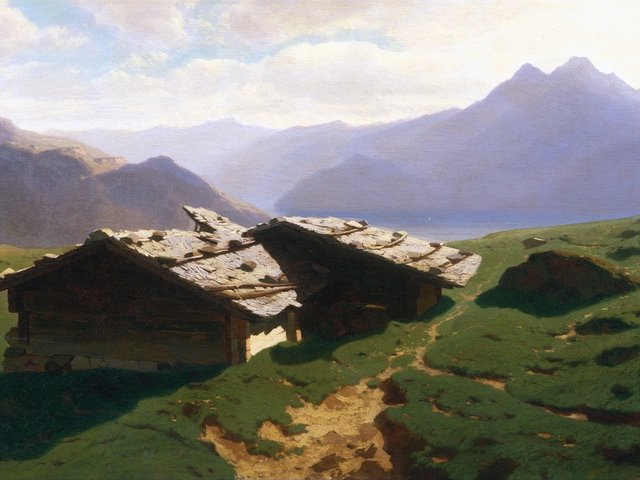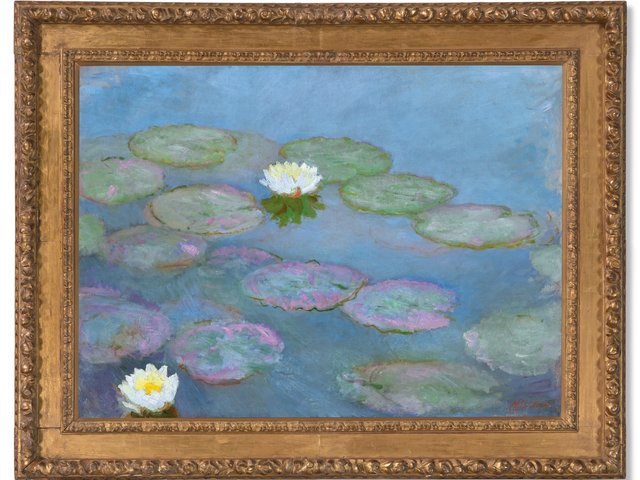The National Gallery wanted to bid for Monet’s “Poplars”, which sold at Christie’s on 8 November, but at the last minute it decided to withdraw because of fears that the painting might have been World War II loot. Warning bells were sounded when it was realised that the picture had been owned by A. & R. Ball, a New York gallery which is named in a US government report on dealers who collaborated with the Nazis. The Monet, which was featured on the cover of Christie’s Magazine in November, subsequently sold in the New York auction to a Japanese private collector, for $6,400,000, below the $7-10 million estimate.
The Christie’s catalogue gives the first owner as Georges Viau, Paris, who was Monet’s dentist (it is possible that the artist may have given the picture in return for dental treatment). The painting is then recorded as with the Ball brothers in 1960, who sold it to Else Sackler, wife of benefactor Arthur Sackler, whose family recently consigned it to Christie’s. Although the National Gallery wanted to acquire the 1891 “Poplars”, it immediately realised that the Ball provenance posed a problem. The 1946 US War Department’s Office of Strategic Services report on dealers involved in Nazi collaboration (for the complete report, see www.theartnewspaper.com focus on looted art) said of Alexander Ball: “German Jewish refugee dealer. Intermediary for Haberstock [Hitler’s leading dealer] in the sale of pictures from the unoccupied zone [of France]. Also believed to have informed on the whereabouts of prominent Jews, notably Guy de Rothschild. Believed to be in the United States.” Although the report is not infallible, the National Gallery was concerned and its agent immediately sought assurances from Christie’s.
Christie’s responded that it had contacted the specialist art loot researcher Hector Feliciano. The auction house later told us what advice he had given: much of Viau’s art had been auctioned in 1942 and this might well have included the “Poplars”, although details of the sale had not survived, making it impossible to be certain. Feliciano pointed out that although Ball may given information to Haberstock about Jewish collectors, it has not been suggested that Ball personally dealt in looted art. Christie’s also checked with the Art Loss Register, but this inquiry was only made on the day of the sale, several weeks after the National Gallery’s initial query. The Art Loss Register had no time to undertake detailed research, although the Monet was not registered as stolen or looted on their database.
These responses did not satisfy the National Gallery, which like other UK national museums has to be extremely careful to ensure that it does not acquire looted art. Despite Feliciano’s assessment, the National Gallery succeeded in tracking down a copy of the 1942 Viau auction catalogue, and found that the “Poplars” was not included. The gallery also established that Viau had sold works from 1907 onwards, making it likely that the “Poplars” had changed hands before World War II. However, it should be stressed that there is no evidence that the Monet was looted, merely that its providence for the 1933-45 period is far from clear.
The National Gallery reluctantly decided not to bid. Other museums may have reached a similar decision and this could have affected the auction price.
Another Monet once owned by the Ball brothers is currently subject to a war loot claim. This is “Garden at Argenteuil”, now at the Metropolitan Museum in New York. Although the case has not yet been publicised, descendants of a family which had been in Germany during World War II say that the Monet was seized from their Berlin bank vault by the Red Army. It was then apparently taken to the Soviet Union, and later surfaced in the US. Legal action has been initiated against the Metropolitan, which argues that it is uncertain whether the family owned the museum’s picture (since there are numerous versions of the Argenteuil garden).
Curiously, although “Garden at Argenteuil” is recorded on the Metropolitan’s website of works of art with an unclear provenance for the 1933-45 period, no details are given about earlier owners. It is merely stated that the Monet was owned by Mr and Mrs Charles Wrightsman by 1960 and donated by Mrs Wrightsman in 1994. However, the authoritative Wildenstein catalogue raisonné gives further information, recording that “Garden at Argenteuil” belonged to Baron de Herzog in 1911 and was acquired by Mme Guy Lemm, before passing to A. & R. Ball in 1952.
It is surprising that the earlier provenance is not given on the Metropolitan’s website, particularly since the Ball brothers are listed in the US report on Nazi collaborators.



